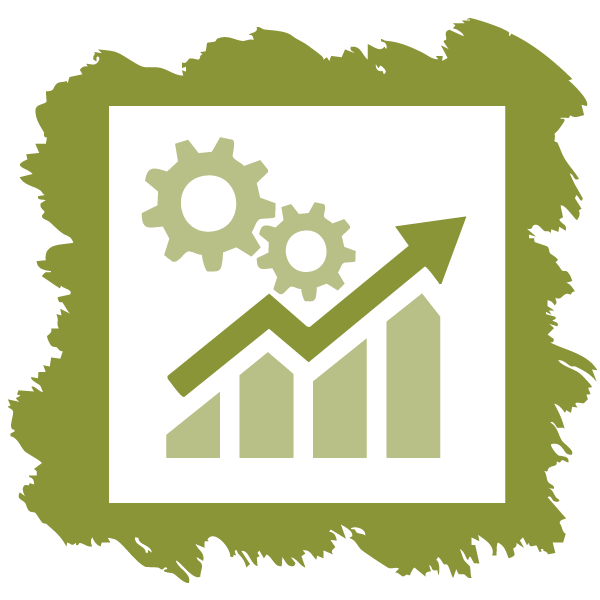Organizations worldwide spend an estimated $370+ billion annually on leadership development programs. And yet, leadership training is often seen as a perk or “check-the-box” exercise rather than a critical business strategy.
That’s because when budgets tighten, these programs are often the first to go. Shareholders tend to overlook the ROI of leadership development and its vital role in addressing key challenges. But what if the cost lies in not investing? What if leadership development could instead be the key to driving revenue (and productivity and retention)?
Learning and development (L&D) professionals design thoughtful programs, witnessing transformative growth in leaders. However, it can be challenging to prove the tangible outcomes of these investments to executives who are responsible for the bottom line.
But here's the reality: when organizations approach leadership development strategically and measure the impact, results can be impressive.
The answer lies in shifting your approach. To make a compelling case, move beyond completion rates and satisfaction scores. By linking programs to bottom-line results, HR and L&D can position leadership training as a critical growth driver.
Why It’s Important to Measure the ROI of Leadership Development
Traditional metrics like satisfaction scores and completion rates gauge training quality but miss true business impact. Executives and shareholders want to see the ROI of leadership development in concrete outcomes like revenue, retention, and productivity.
Businesses shouldn’t disregard qualitative benefits like improved team communication, decision making, and relationships. These soft metrics carry more weight when you tie them to hard results, such as:
- Improved communication accelerates project timelines
- Better decision making reduces costly errors
- Stronger relationships contribute to higher employee retention
By connecting leadership development with tangible business outcomes, L&D professionals can build a data-driven case for investment. This approach helps protect and even expand budgets. What’s more, leadership development is positioned as a core strategy for building resilience, adaptability, and long-term competitive advantage in the workplace.
How to Measure the ROI of Your Leadership Development
To deliver measurable ROI, a leadership development program must align with an organization's business drivers and goals.
The goal is to design a development approach that doesn't just check boxes but actively advances your organization’s specific objectives. So, where do you begin?
In the following sections, we'll explore five ways leadership development creates measurable business value and how to measure the impact on your company.

1. Reduce Employee Turnover
Companies with effective leadership development programs see significantly lower turnover rates. For example, Forrester found that DDI’s Leadership Development Subscription improved employee retention by 12%.* One DDI client, Hitachi Energy, experienced even more dramatic results, reducing salaried turnover by 80% and hourly turnover by 25% after launching leadership training.
This data suggests that providing development opportunities makes leaders feel valued and shows them clearer career paths inside the company, reducing their desire to seek opportunities elsewhere. In fact, leaders who receive quality coaching are 1.5X less likely to feel they need to change companies to advance. This retention effect also extends to emerging talent. High-potential employees were 2.4X more likely to stay at companies offering development experiences.
This sentiment was echoed by a Senior Manager of Organizational Development in retail, who noted a shift in focus after implementing leadership development: “We were too busy to spend time to develop ourselves or see development opportunities.”
“Now, we understand as an organization how much it really is a big retention and engagement piece for the way new generations are trending."
Effective leadership development not only retains leaders, but also positively impacts their teams. The proof is in the data: employees were 3.5X more likely to leave within a year if they perceived poor interpersonal skills in their company’s leadership. By investing in developing capable, people-oriented leaders, organizations can create healthier team environments and address key drivers of turnover across the board.
How to Measure the Impact of Leadership Development on Turnover
Retention is a crucial metric for showcasing the ROI of leadership development to shareholders. But how can you effectively measure it?
Start with a big-picture analysis by examining retention trends across the organization before and after rolling out leadership development programs. This comparison can give you a solid sense of how overall retention has shifted.
For a sharper view, zoom in on voluntary turnover rates. Compare the rates among teams led by trained leaders versus those led by untrained leaders. These targeted comparisons make it easier to see the direct impact leadership development has on turnover.
Finally, take an economic approach. Use a turnover cost calculator or your internal data to estimate the cost savings from reduced turnover. Showing these numbers can highlight the financial value of investing in leadership development.
Now, we understand as an organization how much it really is a big retention and engagement piece for the way new generations are trending.
Senior Manager of Organizational Development in retail

2. Increase Productivity and Efficiency
It’s quite simple: developing leaders boosts their productivity. DDI’s Leadership Development Subscription has raised productivity by over 8,750 hours annually.*
Development programs equip leaders with essential delegation, prioritization, and time management skills. These skills help them and their teams focus on high-value tasks. Improved communication and strategic thinking help leaders identify bottlenecks, streamline processes, and align teams with organizational goals.
Additionally, leaders with stronger performance management skills can better coach underperforming team members and minimize productivity drains. They also create systems to maximize output with minimal wasted effort.
"When a leader is able to establish an environment of high trust and teamwork, process improvement at all levels becomes automatic," said an Organizational Development Manager about their DDI experience. "There is almost a constant 'how can we do this better' frame of mind that extends far beyond the borders of the department."
How to Measure the Impact of Leadership Development on Productivity
So how can you prove that leadership development gives back time and increases efficiency for leaders and their teams? Begin by tracking key performance indicators (KPIs) that directly reflect productivity improvements, such as:
- Revenue per employee
- Project completion rates
- Cycle times for key processes
- Department-specific output metrics (e.g., cases handled, units produced)
- Time spent on strategic versus administrative tasks
Analyze these metrics before and after training periods to uncover trends. For example, shorter cycle times or a higher proportion of time spent on strategic initiatives often signal improved efficiency. This improved efficiency ties back to overall business goals like profitability and innovation.

3. Enhance Customer Satisfaction
Leadership development can enhance an organization’s customer-centric culture by equipping leaders with the skills to cultivate it. Trained leaders gain the coaching abilities to build teams that can deeply focus on customer needs. This includes guiding employees to better understand client needs and establishing systems to enhance service quality. By developing strong interpersonal and problem-solving skills, leaders elevate their teams’ capacity to handle complex customer situations and deliver exceptional experiences. For organizations committed to putting the customer first, leadership training can offer critical skills needed to translate that value into action.
As one DDI client said, “What excites me the most is I believe we're making a difference in people's lives. When people come into work, and they have skills and they have the energy they need to be able to work with their colleagues, the bottom line is that helps our patients and their families.”
How to Measure the Impact of Leadership Development on Customer Satisfaction
To connect leadership development with improved customer experiences, it’s important to focus on how leaders’ skills translate into tangible outcomes. The right data can reveal how training fosters customer-centric behaviors.
Start by examining customer satisfaction trends across teams led by trained leaders versus those who haven’t completed leadership development programs. Pay attention to KPIs like:
- Customer satisfaction scores (CSAT)
- Net Promoter Scores (NPS)
- Customer retention rates
- Customer complaint volume
These indicators offer a window into how well teams meet customer needs. For example, a boost in NPS scores often signals stronger customer advocacy, while fewer complaints point to smoother service interactions.
Finally, interpret these outcomes in the broader context of your business goals. For instance, higher customer retention contributes to stable revenue. By linking improvements to development efforts, you can clearly show how building leadership capabilities leads to a measurable difference in customer experience.

4. Strengthen Safety and Quality Standards
While leadership development primarily focuses on improving management and interpersonal skills, it can also have a direct, positive impact on workplace safety and quality standards. One DDI client, a global building materials organization with over 3,000 locations, reduced worksite fatalities by 76% after training leaders on how to build a culture of safety. As their VP of Operational Development stated, “We are building better leaders for a better future, but it’s actually more than that. We not only change lives, we are saving lives as well.”
Beyond improving safety, leaders who receive targeted development can enhance overall quality across the organization. By communicating clearly, role modeling, and reinforcing proper procedures consistently, these leaders are better equipped to help their teams uphold quality best practices.
Additionally, development that cultivates problem-solving and strategic thinking skills allows leaders to identify potential safety or quality issues early and implement preventive measures. Leaders skilled in coaching and feedback can quickly correct unsafe behaviors or quality issues before they become systematic problems.
How to Measure the Impact of Leadership Development on Safety and Quality
Where can you see the results of your leadership development on safety and quality? And what data can help you build your case? For safety and quality, the key metrics often include:
- Accident rates
- Workplace injury frequency
- Quality defect rates
- Rework costs
- Compliance audit scores
- Safety violation incidents
By comparing these metrics from periods before and after leadership development implementation, you can discover where the most significant improvements have been made—whether in operational safety, compliance, product quality, or all the above. Next, compare results between teams led by trained leaders and those led by untrained leaders, revealing the extent of improvements you can attribute to leadership development.

5. Drive Revenue Growth
Leadership development can fuel revenue growth by providing leaders with business-critical skills like strategic thinking and decision making. The result? Leaders are better equipped to identify and act on revenue opportunities.
Leaders who receive targeted training are better equipped to align their teams with organizational goals and execute efficiently and collaboratively. For example, Progressive’s Leadership Launch program has built a pipeline of leaders with strong coaching skills and cultural alignment. This helped to support sustained revenue growth and consistency across teams. With advanced coaching and performance management abilities, leaders enhance sales effectiveness, strengthen customer relationships, and drive revenue-generating activities.
When leaders foster innovation and get better at connecting strategy to execution, they empower teams to successfully launch new products or services, enter new markets, and maximize revenue from existing customers. By aligning leadership development with revenue goals, organizations directly link well-trained leaders to financial success.
How to Measure the Impact of Leadership Development on Revenue
To strengthen the link between your development efforts and revenue with data, analyze common revenue metrics across the company before and after leadership development programs. For example:
- Average deal size
- Customer lifetime value
- New product revenue
Next, compare year-over-year revenue growth between divisions with trained leaders versus divisions headed by untrained leaders.
To provide shareholders with a different perspective, present changes through the lens of revenue per employee. Compare this figure to the cost of training per employee to reinforce the ROI of leadership development. Demonstrating how leadership programs directly enhance employee contributions can strengthen your case for ongoing investment in development.
Realizing the ROI of Leadership Development
When HR and learning teams shift from tracking metrics like course completion rates and satisfaction scores to measuring real business impact, the ROI of leadership training becomes clear. And by directly connecting leadership development to critical metrics, HR and learning teams transform from "training coordinators" into essential strategic partners.
The numbers tell the story. Whether it's millions saved in reduced turnover, revenue growth from high-performing teams, or significant efficiency gains, the positive impact of leadership development shows up across the business.
With concrete data, HR and learning professionals can shift the conversation in the boardroom. Suddenly, leadership development is no longer a “nice-to-have” but a vital investment driving bottom-line results across the organization.
Explore DDI’s ROI Study: https://www.ddiworld.com/research/roi-of-ddi-subscription
*Results are over three years for a composite organization based on interviewed customers as part of the 2024 Forrester Total Economic Impact (TEI) study of a DDI Leadership Subscription.
Topics covered in this blog

